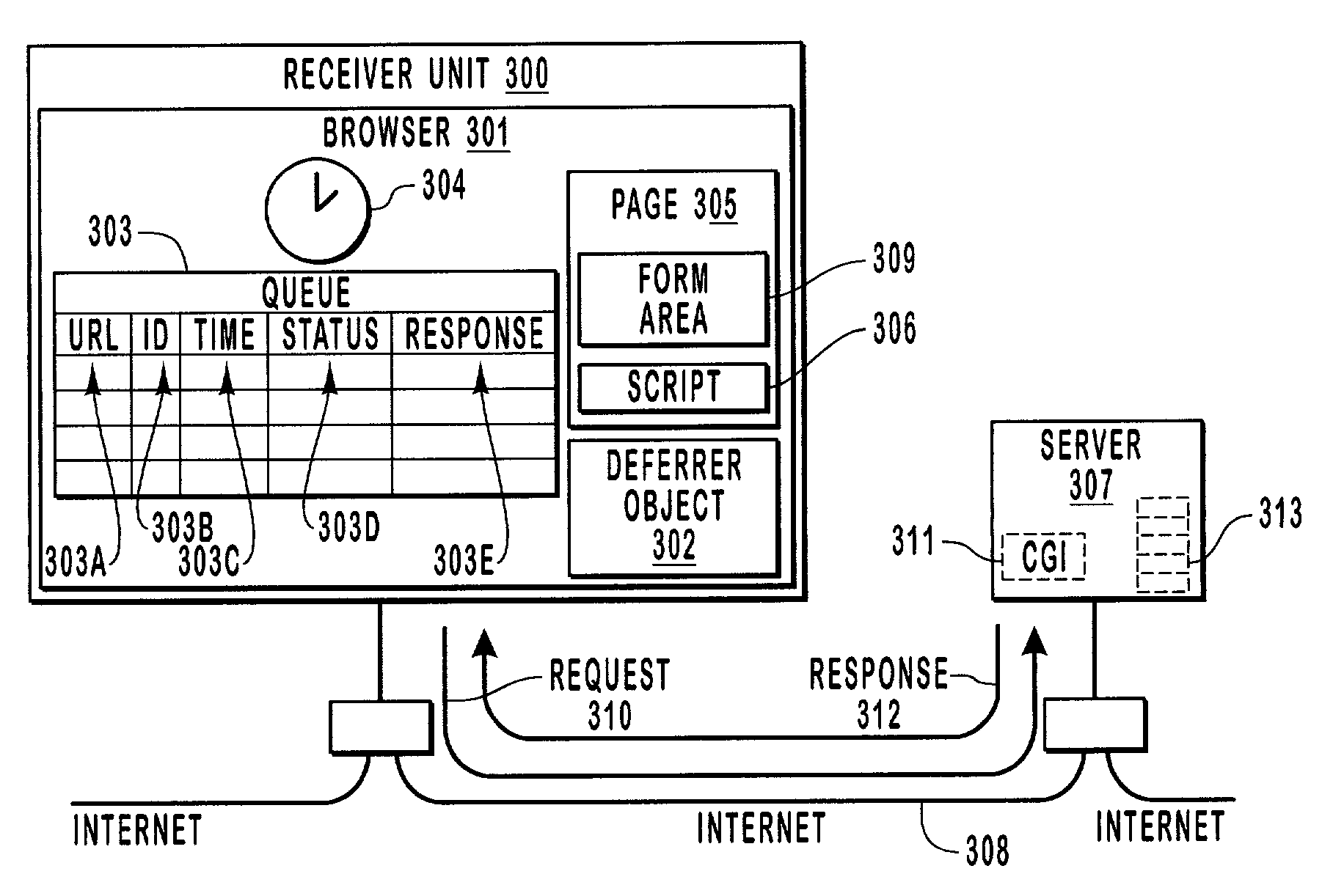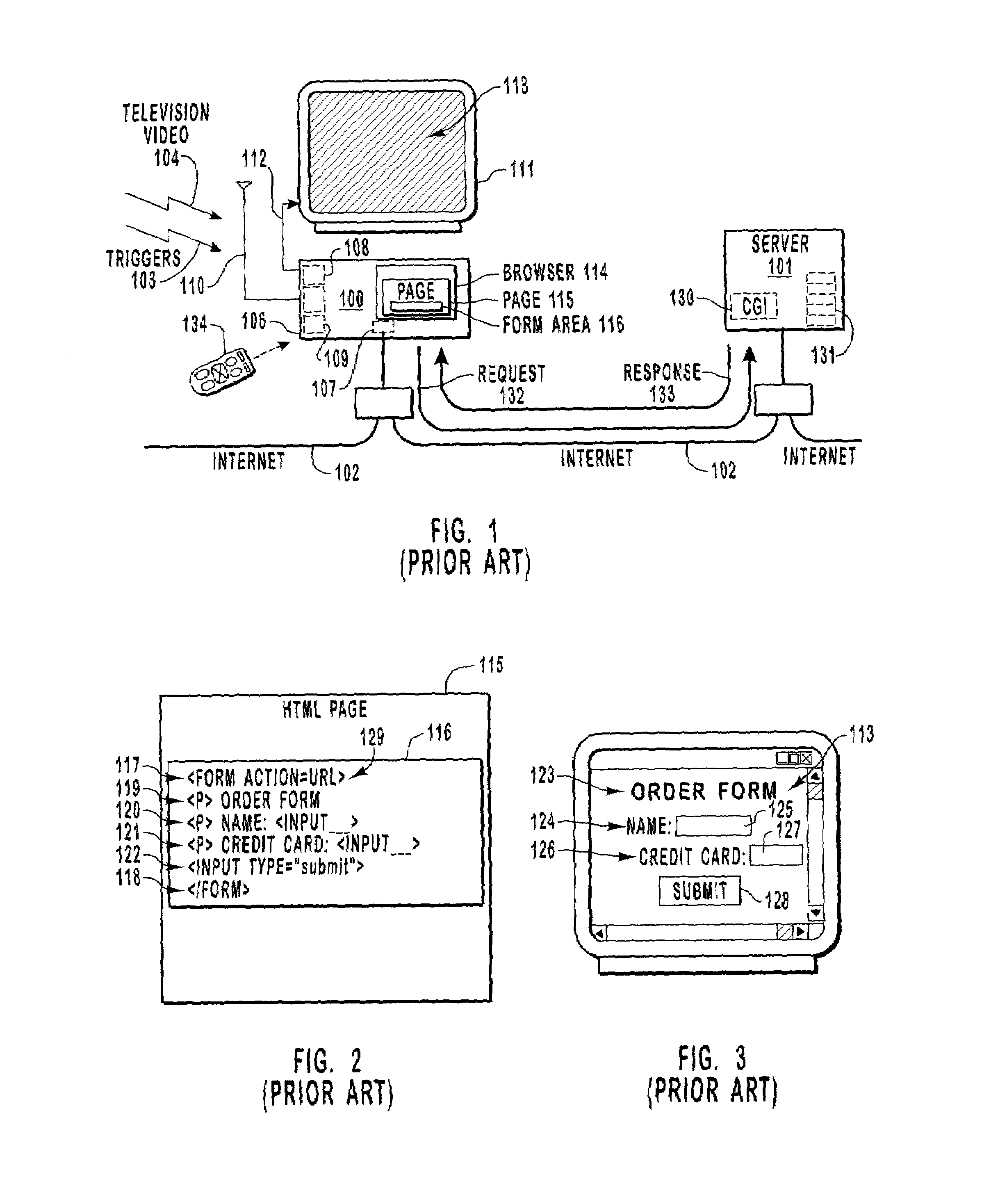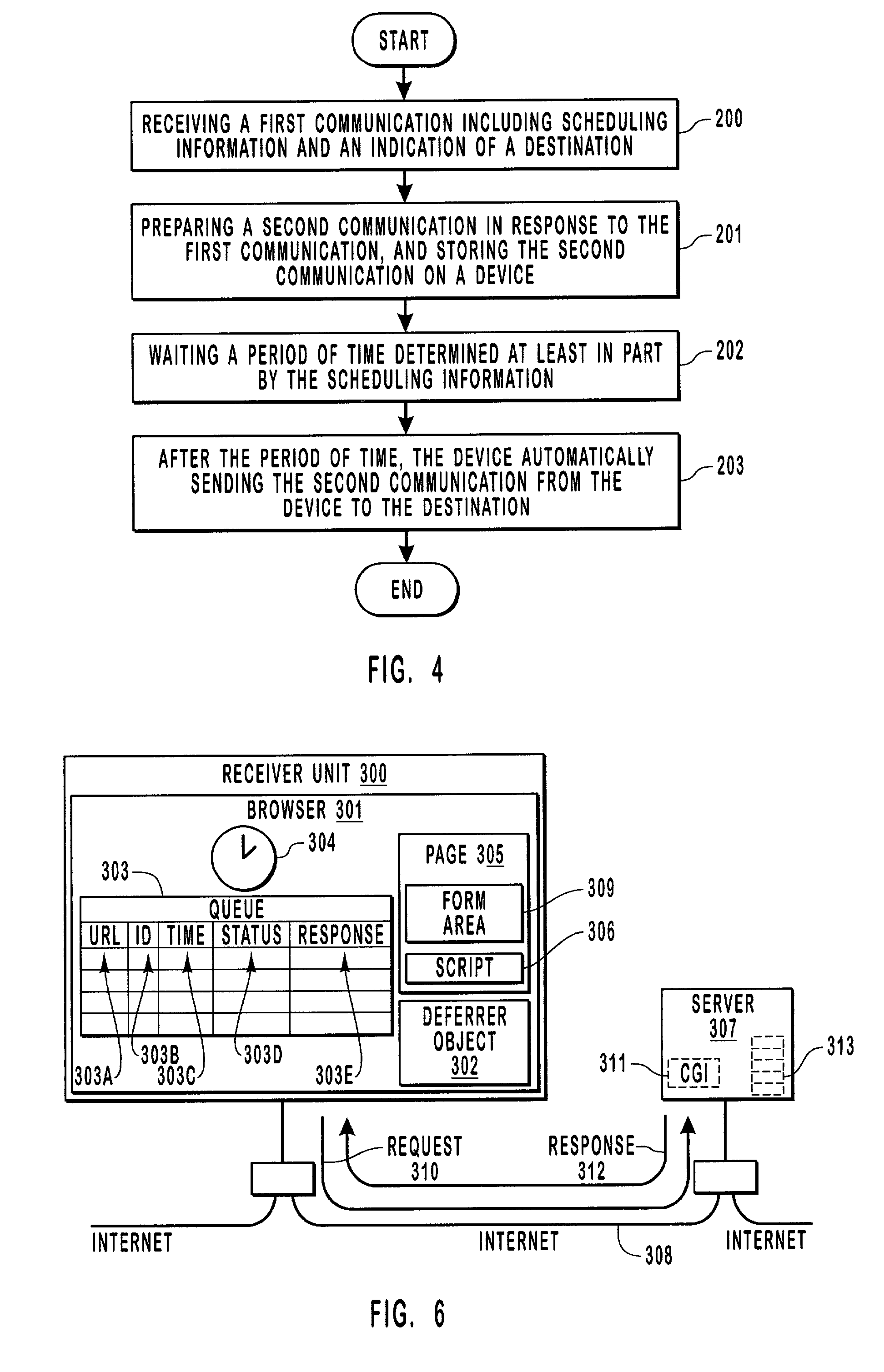Interactive television receiver unit browser that waits to send requests
a technology of interactivity and receiver unit, applied in the field of interactivity television receiver unit 100, can solve problems such as loss of sales, and achieve the effects of reducing or eliminating problems, eliminating throughput bottlenecks, and being less expensiv
- Summary
- Abstract
- Description
- Claims
- Application Information
AI Technical Summary
Benefits of technology
Problems solved by technology
Method used
Image
Examples
example
[0049]The following example illustrates a use of a deferrer object in a web page. The page asks the viewer to vote for or against cheese. When the viewer clicks on an image, the client defers the viewer's vote and displays an alert.
[0050]
Your feedbackfunction DeferVote(myvolte){if (myvote = “yes”)deferrer.defer(“http: / / voting.com.askmelater?myvote=1”, “You voted yes.”, 0, 0);elsedeferrer.defer(“http: / / voting.com.askmelater?myvote=0”, “You voted no.”, 0, 0);}alert (“Thank you for your vote!”);VOTE NOW!Are you in favor of cheese?
[0051]A somewhat more sophisticated implementation may have a pleasing graphical user interface and might do error checking, discovery of connection capability, and detect deferrer functionality.
[0052]Although the present invention is described in connection with certain specific embodiments for instructional purposes, the present invention is not limited thereto. A browser outside the interactive television context that does not respond to triggers but that i...
PUM
 Login to View More
Login to View More Abstract
Description
Claims
Application Information
 Login to View More
Login to View More - R&D
- Intellectual Property
- Life Sciences
- Materials
- Tech Scout
- Unparalleled Data Quality
- Higher Quality Content
- 60% Fewer Hallucinations
Browse by: Latest US Patents, China's latest patents, Technical Efficacy Thesaurus, Application Domain, Technology Topic, Popular Technical Reports.
© 2025 PatSnap. All rights reserved.Legal|Privacy policy|Modern Slavery Act Transparency Statement|Sitemap|About US| Contact US: help@patsnap.com



